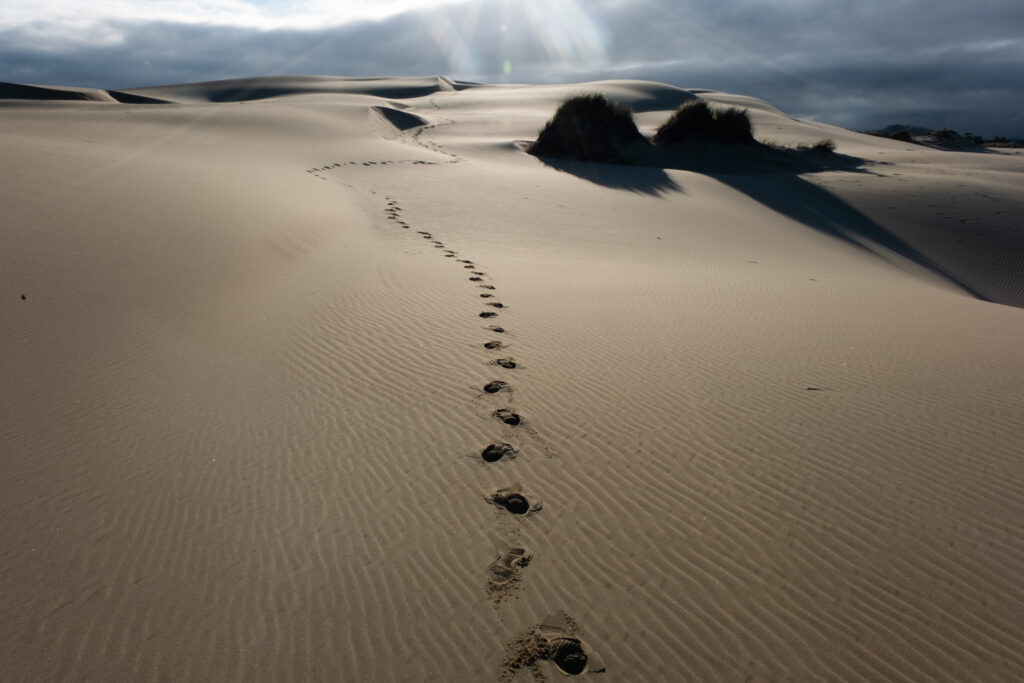
Open Sand
The Florence to Coos Bay dune sheet is described as the largest in North America. Formed by wind and water, it is the inspiration for an epic science-fiction story, devoured forests, drives the local economy, and may disappear completely in this century.
Written and photographed
by Will Yurman
The Origin Story
The story of the dunes begins 65 million years ago, give or take. It was the time of the great dinosaur extinction — though that’s a coincidence and a story for another day.
Imagine the United States, but without Oregon or Washington. Ancient Idaho had beachfront property, and the Pacific Northwest was an exceptionally large bay. The evidence for this comes from studies of the sedimentation and fossil record, Dr. Win McLaughlin said. McLaughlin is a paleontologist and assistant professor of geology at Southwestern Oregon Community College, and a self-avowed lover of sand and the stories that ancient sand layers tell.
Fossils from that period, found in Oregon, include whales and walruses, seals and sea lions and a long-extinct sea hippo.
So 65 million years ago, a series of islands, Hawaii-like, McLaughlin said, were moving towards what would become the United States. They hit the continent’s edge and were too big to squeeze under the continental plate. Instead, their tops were scraped off, like icing from a cake, filling in the bay and forming what would become Oregon and Washington.
The process took tens of millions of years. “So the vast majority of the Oregon coast is geologically fairly young. It’s mostly less than 30 million years old, a lot of it less than 20 million years old,” McLaughlin said. “A lot of time to people, not so much time for rocks.”
It was warmer than today, and warmer means higher seas.
All of this sets the table for the dunes.
Then come the ice ages.
Starting a few million years ago, we, not you and me, but we the Earth, went through a series of ice ages. With each cold spell, ocean levels fell. “Think of a Starbucks iced beverage,” McLaughlin said. Pull the ice out of the cup, and realize how little actual drink there is. Pull water out of the oceans to form the glaciers, and you are left with less ocean.
Lower sea levels exposed the ocean sediments. “You start blowing all of that around, and the wind helps to sort it. You have water moving bigger rocks. You have the really fine particles getting totally blown inwards and making the lowest plains of eastern Washington. But you concentrate all of the small sand grains kind of up and down the Oregon coast and make our big dunes,” McLaughlin said.
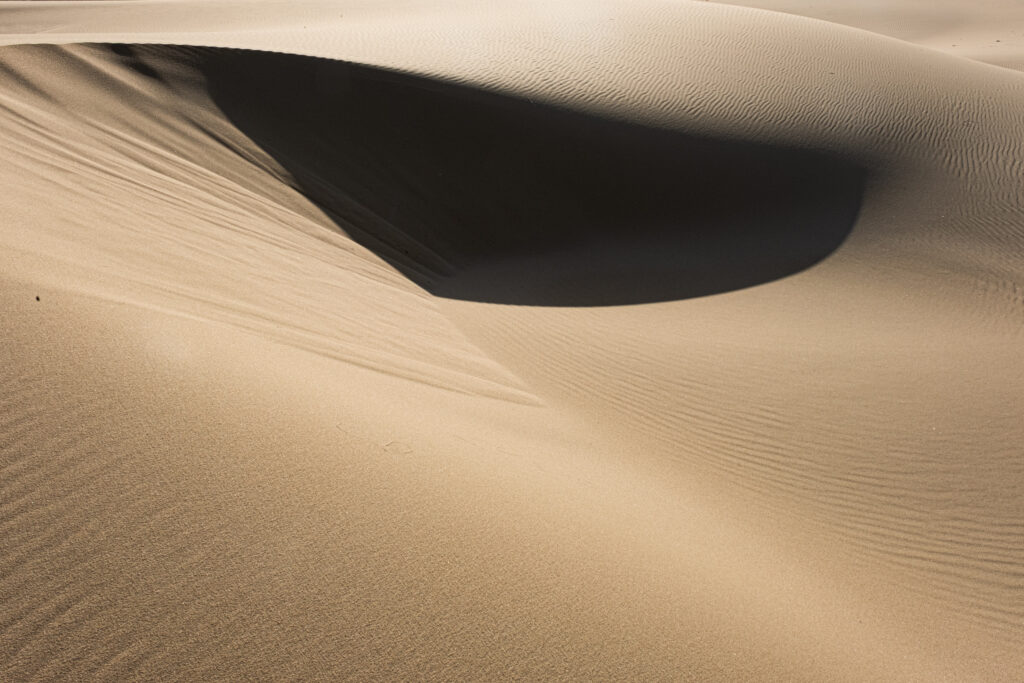
There were no tall dunes along the shore that could block the wind. So the sand could be blown, sometimes for miles, inland.
Between the ice ages, ocean levels rose as glaciers melted, and there was less sediment, less sand, available to feed the dunes. Grasses, scrub brush and trees moved in, encouraged by the warmer temperatures, reclaiming the land and covering the dunes.
The current dunes that run from Coos Bay to just north of Florence, described as the largest coastal dune sheet in the country, are estimated to be around 6,000 years old and sit atop more ancient dunes.
These are the dunes that inspired Frank Herbert to write “Dune.” They are the dunes that fuel much of the tourist economy along the coast, the dunes that protect native species. They are the dunes that we ride, hike, and board. A natural wonder of the world that may not exist in 50 years.
The Oregon Dunes National Recreation Area (ODNRA) includes about 31,500 acres of what is or was the dunes, according to Armand Rebischke, a restoration botanist with the U.S. Forest Service. Rebischke and others estimate 70% of the open sand has already been lost to invasive species. The ODNRA is part of the Siuslaw National Forest and extends from Coos Bay to Florence. The recreation area is a primary driver of tourism for the coastal communities.
Shane Gill, 48, is the recreation manager for the national recreation area. Gill grew up in Reedsport and has spent 20 years with the U.S. Forest Service, all with the ODNRA.
He has watched the dunes, the open sand, slowly disappear in his lifetime, but still sees the power and magic in the sand. “Where else could you get this experience anywhere in the national forest system?” he said.
Gill’s parents worked at a lumber mill in Reedsport. He has seen the coastal communities struggle economically and try to reinvent themselves as recreation and tourist centers. And the dunes are front and center to that. “You don’t come here once and feel like you’ve seen it. This is a place you could come to every few years,” he said.
About 500,000 people visit the area each year, Andy Vobora, vice president of stakeholder relations at Travel Lane County, said. Studies commissioned by the agency show that in 2024, tourism generated about $287 million for Western Lane County. That translated into nearly 2,500 jobs and millions of dollars in state and local tax revenue, the report concluded.
Without the remaining open dunes, those numbers would surely be smaller. But without the grass holding down most of the sand, U.S. Route 101, the highway that connects the coast to the rest of the world, might not exist.
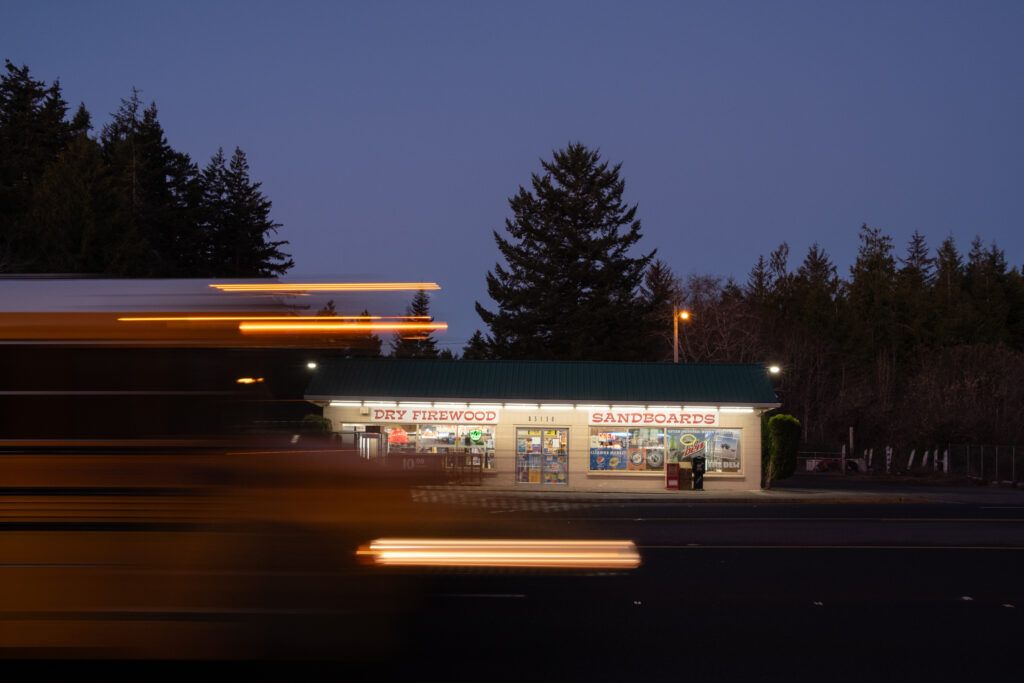
Capturing the Sand
Open sand moves and shifts. It migrates, transforms, and, most importantly to humans, is unpredictable.
One hundred fifty years ago, settlers were already confronting their sand problem. An article in the January 17, 1874, edition of the Tri-Weekly Astorian described an early battle.
Cows, grazing on the ridges of the Clatsop Plains, ate the vegetation that held the sand in place, releasing blowing and drifting sand that covered the meadows to the east.
“To this end the Town of Clatsop plains was incorporated, but the only plan adopted by the authorities has been to cause each farmer to keep the cattle off the sea ridge in front of his farm, so that the native vegetation may again spread over the sand.”
~ Tri-Weekly Astorian, January 17, 1874
The paper thought this was insufficient and called on the town to plant lupine, native spruce and pine to further anchor the dunes.
The strategy —the planting, not the cow ban — foreshadowed how the dunes would be controlled on a large scale, beginning early in the 20th century. A strategy that would be wildly successful, too successful, according to many.
As the coast was developed in the early 1900s, blowing sand became an increasing problem.
A windy day, or a large storm, would move the dunes, covering homes and businesses and the nascent U.S. Route 101 — the coast’s link to the rest of civilization.
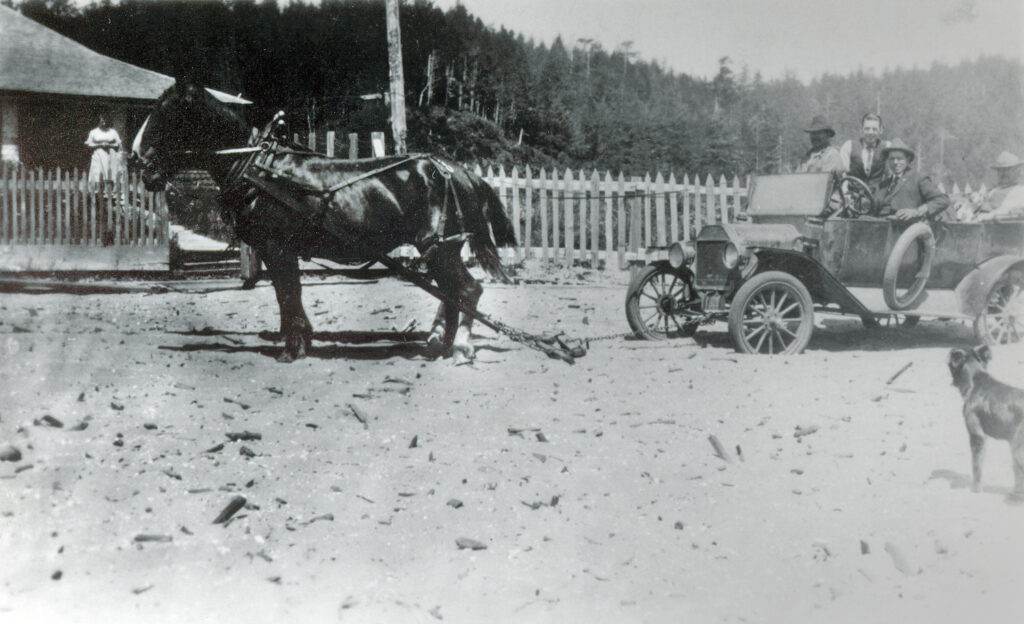
Before Route 101, there was the beach. Indigenous tribes and then the European settlers used the beach as their highway. Photos show horse-drawn carriages and even automobiles driving on the sand.
In the 1920s, construction began on a more practical road for the developing region. What would eventually become U.S. Route 101 was completed in the 1930s.
But roads don’t work if they can disappear overnight under a pile of sand.
The solution was to tame the moving dunes with grass.
Today’s dunes, all along the Pacific Coast, have been radically transformed from when those Clatsop Plains farmers were overgrazing their cows along the sea ridges.
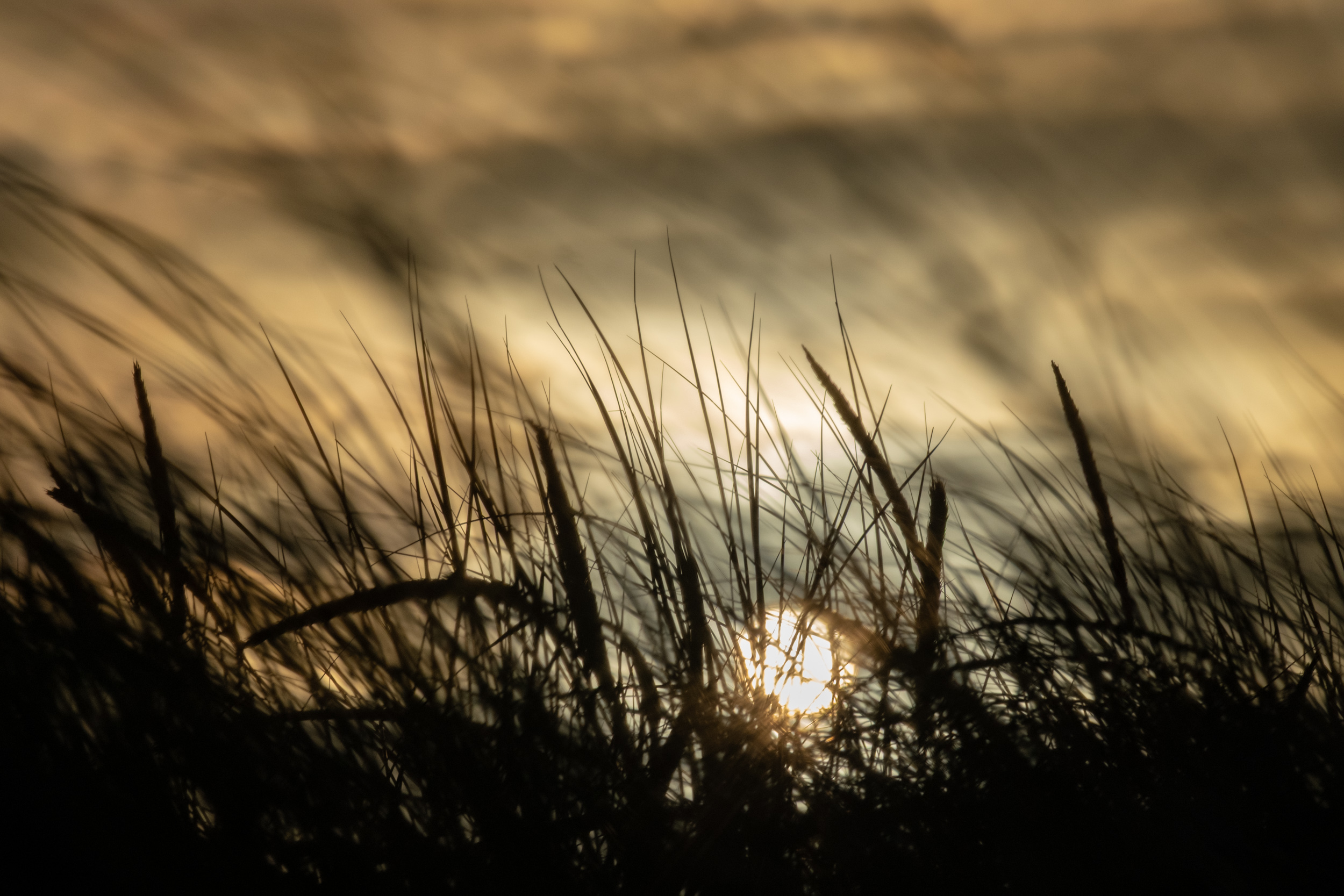
The Three Grasses
In the beginning, there was American dune grass(Latin name, Leymus mollis). This is the native grass, born and bred on the PNW coast. It lives happily in the dunes, grows in the sand, but isn’t so aggressive or hardy that it would or could hold the dunes in place. A very Oregonian grass. Laid back and easy going.
Before the invasion, the dunes were unfettered and untamed. “The sand would go wherever it wanted to go,” Sally Hacker said. Hacker is a professor in the Department of Integrative Biology at Oregon State University and has studied the impact of invasive grasses on the coastal ecosystem.
But today, along most of the Oregon beaches, there are tall, grass-covered dunes that run parallel to the ocean. These are the foredunes, and they are big, tall and/or wide because of the foreign grasses anchoring the sand in place.
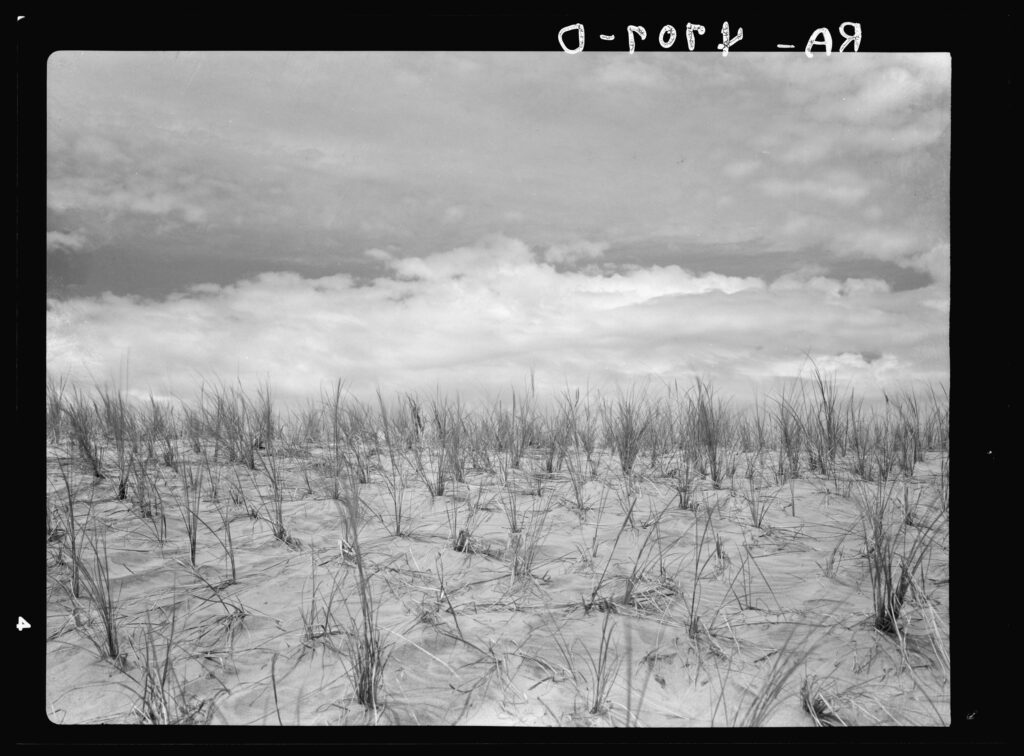
Grasses that were planted intentionally.
In the early 1900s, the architects and builders of the developing coastal infrastructure introduced the European beach grass (Ammophila arenaria) to Oregon with the specific purpose of stopping the sand from moving. And it worked. Beautifully. Or horrifically. Or both.
In 1935, they added the American beach grass(Ammophila breviligulata) to their arsenal. The new grasses took hold and thrived, spreading along the entire coast. “By the 1950s, there was pretty much no place on the entire Pacific Coast that didn’t have the invasive grasses,” Hacker said. The European variety dominates southward from Oregon. Heading north, the American beach grass tends to rule.
American dune grass is the hometown native. It was never abundant, and, important to this story, it doesn’t have the long rhizomes that could anchor it on the sands. Rhizomes are underground branches that can sprout roots and new plants, allowing the grass to spread without reproducing. With its shorter rhizomes, American dune grass has a tenuous hold to the sand and is likely to be uprooted by storms and wind.
The native grass allows the sand, born free, to remain free.
But American beach grass (confusing, but I didn’t name it) is native to the Atlantic coast. With longer rhizomes, it does a much better job of holding tight to the dunes. It tends to send out its rhizomes — again, think underground stems — horizontally. Blowing sand hits the grass and falls on top of it, and the grass grows upward out of the sand. It becomes a cycle, more sand is trapped, the grass grows higher, and foredunes are born — the dunes that run parallel to and directly behind the beach, covered in grass, and impervious to the wind.
European beach grass, like its American invasive cousin, has long rhizomes, except its rhizomes go deep rather than wide. But the process is the same. Blowing sand is caught by the grass, builds up, and then the grass grows above it. Once the foredunes are tall enough, they block the wind from carrying fresh sand beyond the beach.
With either of the invasive species, the existing sand on the leeward side of the foredunes is eventually blown further inland, leaving behind what is called the deflation plain, with little or no sand, which becomes home to more grass, shrubs, flowers and eventually trees. The cycle continues, with more plants colonizing the area, and the open sand disappears.
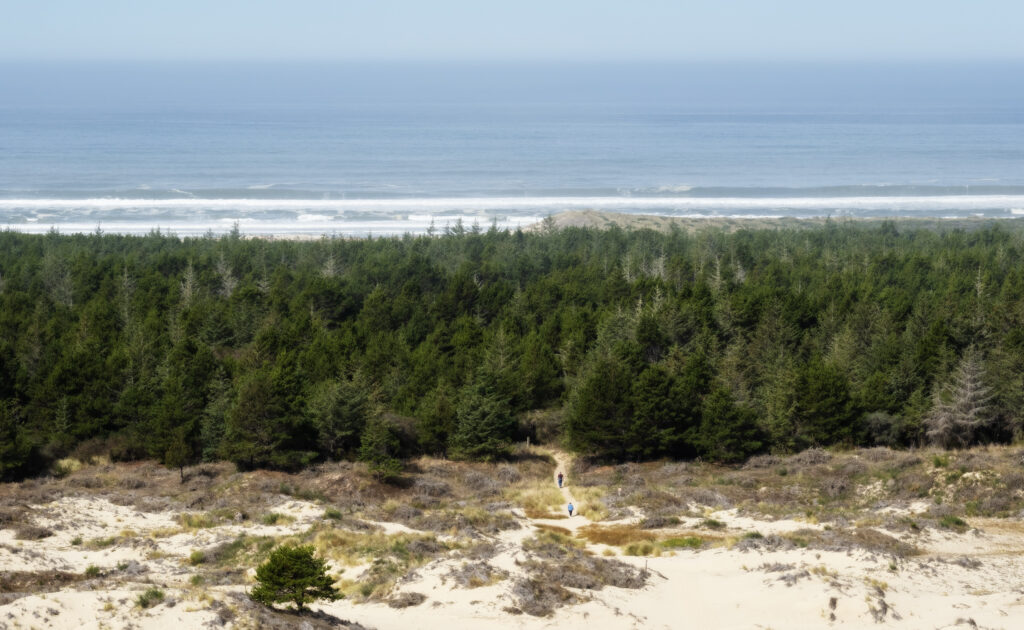
Because the European variety dominates Lane County’s coast, the dunes tend to be tall and narrow. Further north, where the American variety (Ammophila breviligulata) is king, the foredunes are wider but shorter.
“They have completely changed the landscape of the coast over the last 50 years,” Hacker said of the two invasive grasses.“To have a plant be able to do that is really fascinating. And it also had all these kinds of unintended consequences,” she said. Consequences like endangering native species and reducing open sand. But also consequences like the creation of natural barriers against flooding and sea rise.
And I lied. This is no longer the story of three grasses. Because at some point, scientists are not sure exactly when, a hybrid of the European and American species was born. And this variety (Ammophila arenaria × A. breviligulata) seems to outcompete its parents. It is more vigorous and early studies show the dunes it anchors are both wide and tall – the best (or worst) of both its parents.
“The two beach grasses bred with each other and created a completely new species that doesn’t exist anywhere in the world,” Hacker said.
“If the parents could change things so much in 50 years, just think about what this hybrid can do. Just to see that kind of, I don’t know, ecosystem engineering in action is really, really cool to me,” Hacker said. Cool, but also maddening to those who hope to preserve at least some of the open sand.
Jody Phillips was five when he first saw the dunes. It was 1957, the same year Frank Herbert visited Florence and was inspired to write “Dune.” Herbert took a plane ride over Florence to see the dunes and grass. Phillips rode out the South Jetty in his dad’s 1957 two-wheel-drive Ford pickup. “South Jetty, when I was there, was just a kind of a dirt road, and you drove right on the beach. There was no seawall, no vegetation, just wide open sand in ’57,” the now 73-year-old Phillips said. “I fell in love with the place.”
European beach grass changed everything along the South Jetty and along most of the Florence to Coos Bay dune sheet.
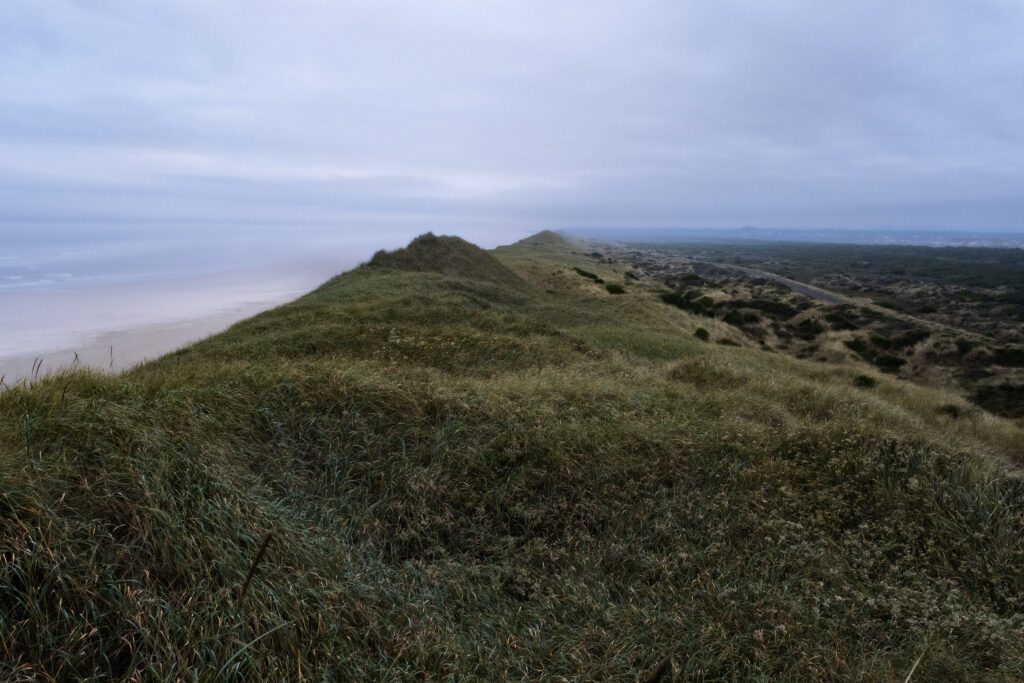
Drive out South Jetty Road now, and in addition to the paved road, you’ll see tall, grass-covered dunes to the left, blocking the view of the ocean. To the right, what was once an expanse of open sand is now grass, shrubs and small trees that often fill with water in the winter.
Phillips is an avid OHV (off-highway vehicle) rider. He is the treasurer of Save The Riders Dunes, a non-profit that promotes off-road riding on the dunes, as well as efforts to preserve and restore the open sand areas that remain.
He is also a member of the Oregon Dunes Restoration Collaborative. ODRC is a partnership of multiple groups and civic leaders, not always likely bedfellows, who support the effort to preserve and restore the dunes.
Phillips sees Save The Riders as the best weapon for keeping the sand open. He argues they are the most effective because the act of driving their vehicles on the dunes tears up the grass.
“We are the only, the only, people out there killing grass. We’re riding on it. Matter of fact, we have “trash the grass” days where we go out and just ride on the beach grass,” Phillips said.
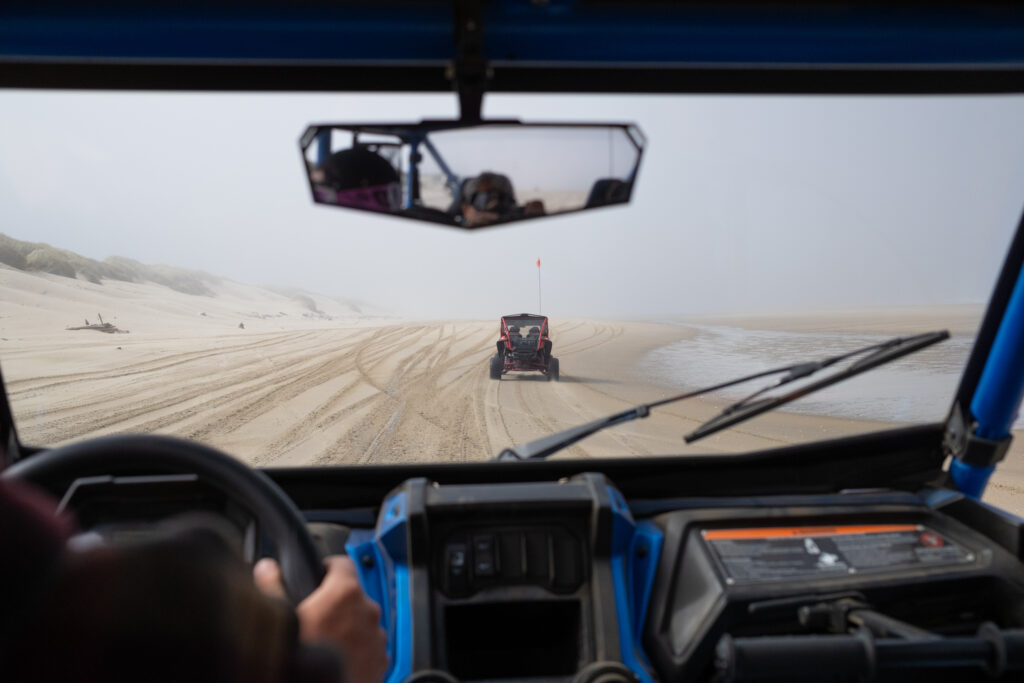
There is a complex relationship between different groups fighting for access and protection of the dunes, involving the U.S. Forest Service, riders, hikers, environmentalists, and anyone else with a stake in the dunes. The coastal marten (Martes caurina humboldtensis) is the poster child for how complex the issue has become.
The Marten
The Oregon Dunes Restoration Collaborative was formed to “Save the Dunes.” It had a three-prong approach, Dina Pavlis said. Pavlis is a founding member of the group and an active advocate for and teacher about the dunes.
Mission one was large-scale restoration. “Where can we fill in miles of deflation plain and knock down miles and miles of foredunes to get sand moving in again?” Pavlis said.
Prong two was about restoring specific sites because of their importance to an endangered species. “There’s more than just snowy plover that’s threatened. So where does it make sense to do some site restoration to preserve something that’s threatened?”
And third, what’s good? How should we look at holding the line and preserving what’s left? “There’s still some good places. I mean, I hike in some really beautiful places that have a lot of open sand. Let’s not let those get worse,” Pavlis said.
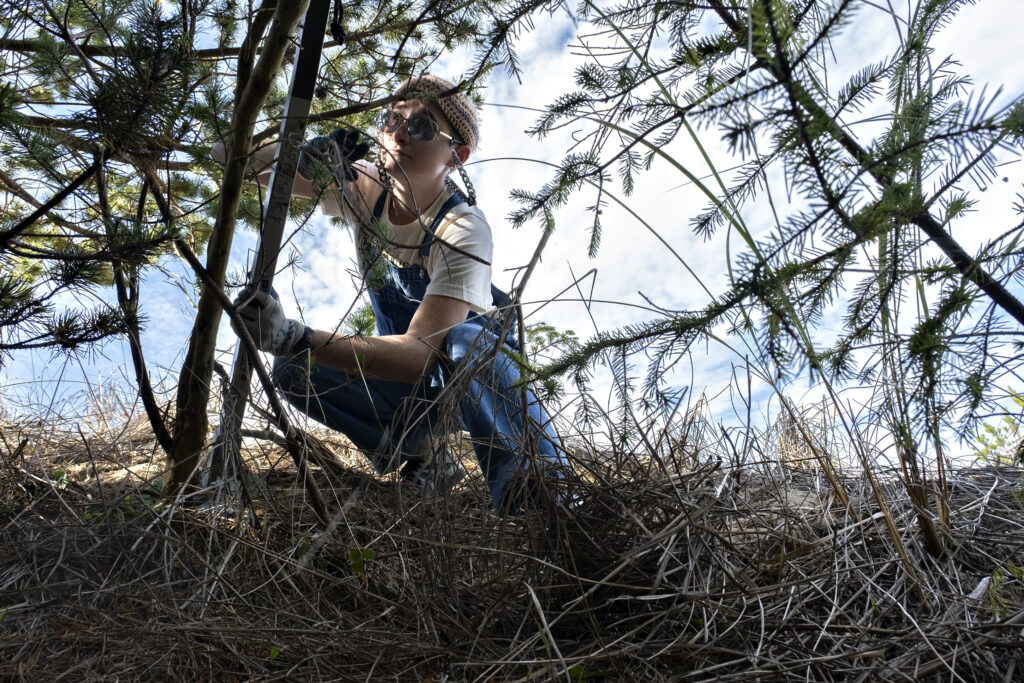
The group was hopeful. There were plans afoot for some large-scale restoration projects.
And then the coastal marten happened.
The marten, also called the Humboldt marten and coastal Pacific marten, is a subspecies of the American marten. It has its own cuteness factor, and like the plover, is also a species at risk. The marten likes the very scrub brush born by the invasive grasses. The same evil grass that threatens the cute plover and less cute hairy-necked tiger beetle is helping the coastal marten.
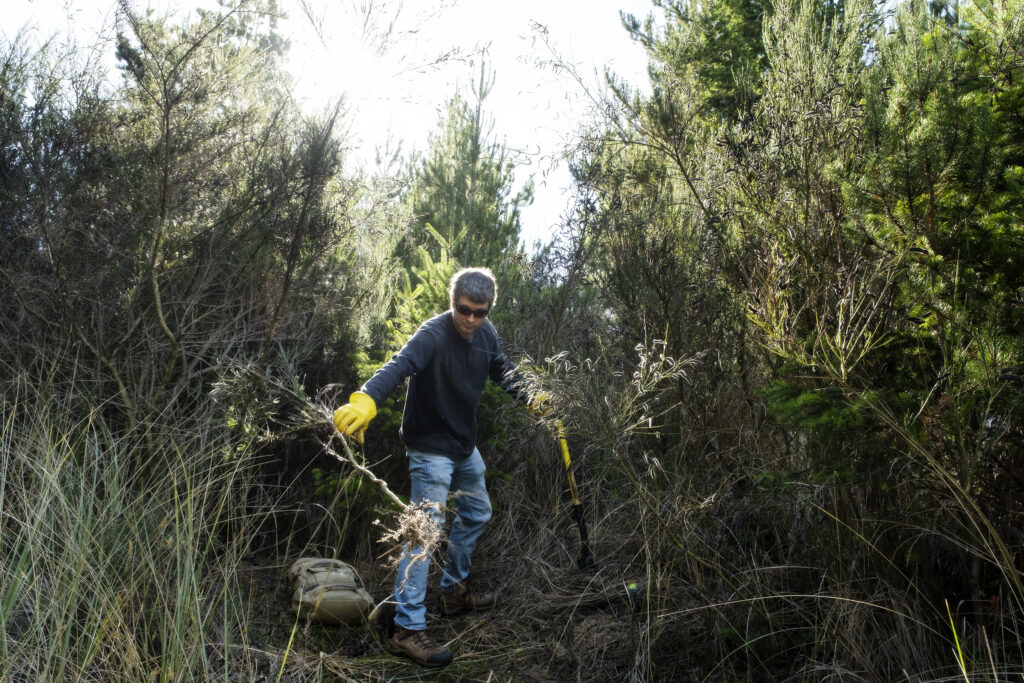
The marten and its protected status have put a wrench, at least for now, in the first two goals. Restoring areas that have become grass and shrub-covered is largely off the table because of the marten. Though the battle has moved to the courts. Work to preserve existing open sand continues. The collaborative organizes volunteers to pull invasive plants from the sand, and other groups are also involved in the physical work of limiting the spread of these plants in selective areas.
Supporters of more open sand argue that the areas the marten inhabits in the dunes are not natural and wouldn’t be there except for the invasive grasses. Marten defenders respond that the subspecies living in the Oregon Dunes National Recreation Area has disappeared from most of its natural habitat due to hunting and habitat loss, and the scrub brush in the dunes is essential to its survival.
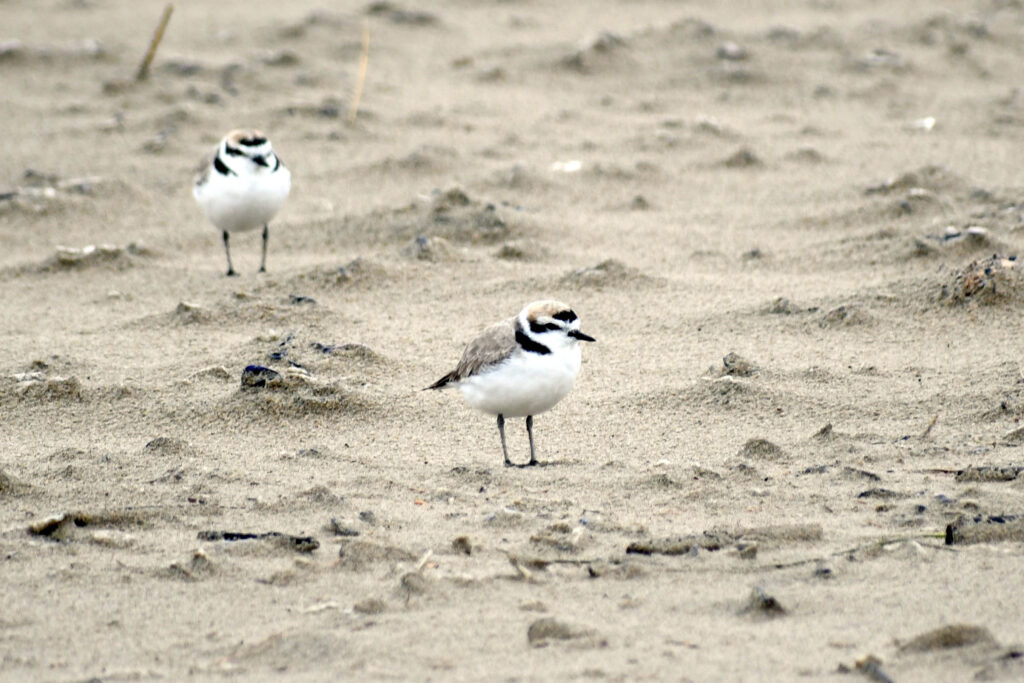
Endangered species have played a starring role in the case for preservation and restoration of the dunes. The western snowy plover (Anarhynchus nivosus nivosus) is the photogenic star for this argument. The cute bird needs open sand to breed. The decline in free sand has led to a decline in the birds’ breeding grounds and their population. And there are other endangered and imperiled species as well, including the pink sandverbena and the Siuslaw hairy-necked tiger beetle, which admittedly could use a good agent to get a more appealing name.
“It’s just a comedy of errors, you know? Human intervention and the unintended consequences are just all over the Oregon dunes,” Jody Phillips said.
Hope or Hopeless
Dina Pavlis saw the dunes for the first time in the late 1990s.
She came to Florence to visit her brother and remembers driving by what would become Fred Meyer on Route 101 and being stunned by the “hill of sand.” Her brother offered to take her out on the dunes the next day, and a love affair was born.
“It was a stormy, stormy day. So we just put rain gear on and we went down to the Oregon Dunes Day Use Area, which back then had much more open sand than it does today,” Pavlis said.
“We went out, we had a big adventure, came back, and I looked at my husband and I said, ‘I want to move here.’ I said, ‘I don’t want to just come here once in a while and walk on these dunes, like once every, you know, six months.’ I said, ‘I want to walk on them every day.’ And luckily, he said, ‘I want to move here too.’”
They moved to Florence in 2004, and her first day in town, she drove to Reedsport and signed up to volunteer with the Forest Service and eventually was driven to write a book about the dunes (Now out of print but available used online)
“When I found out the dunes were disappearing, and I was told then it would be less than 100 years, that most of our open sand habitat would be gone. It was devastating to me.”
Pavlis was captivated by how the dunes change, move, evolve, and remake themselves, often on a daily basis. Dunes can swallow a forest or turn a creek into a lake. It’s that unpredictable power that pushed people to plant the grasses that are turning the open sand into grassy knolls and hillocks.
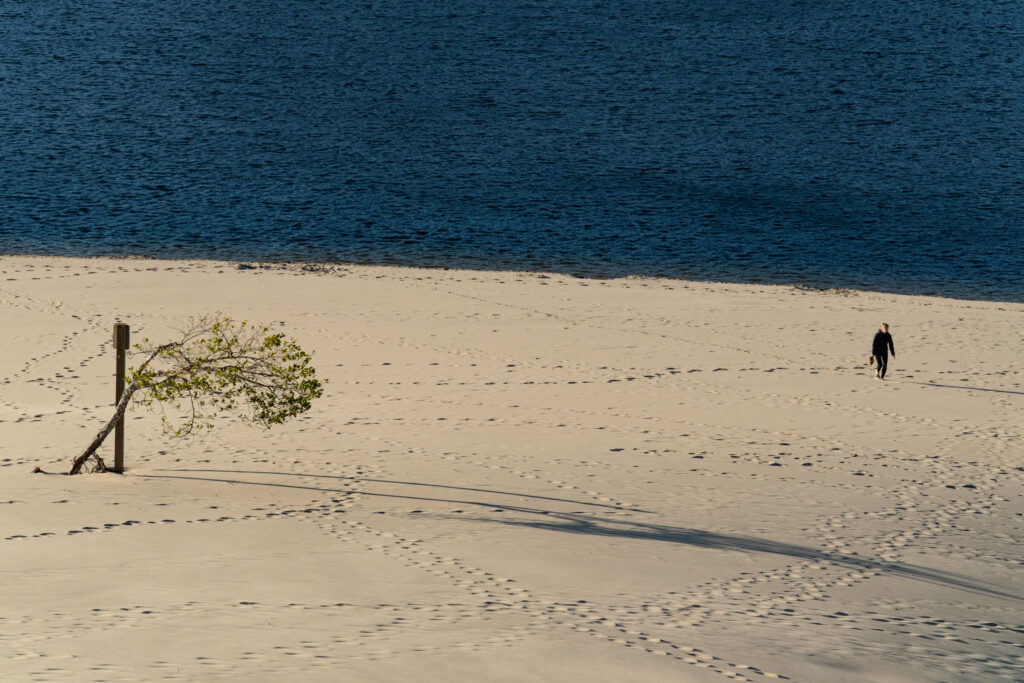
Pavlis said she walks on the dunes almost every day, in areas of relatively open sand. One day to the next can reveal a different swirl in the sand, or the movement of an entire dune.
“I went out. It was near the end of summer. The dunes had built up from the summer wind. And I remember trying to walk. I’m going up and down these dunes.”
“And then a big storm came in that night with huge winds.”
“And the next day I got up and I went out on my normal hike out on the dunes, and that whole area was leveled, just like flat.”
The dunes are capricious and ever-changing. And that gets in the way of highways and houses. So we plant grass to make them predictable, to hold still. And that stops the sand, covers the dunes, and endangers plants and animals. So we try to fix that, but then there’s the marten and the homes built close to the water, protected by the foredunes. Unintended consequences. Complicated.
Meanwhile, oceans rise, tectonic plates push against each other, temperatures change, and in the blink of a geological eye, it will all change again.
On one hike, Pavlis came across a large blown-out area in the dunes, a deep depression where sand had been blown away.
At the bottom of this large divot in the sand, maybe 30 or 40 feet down, she saw something.“So I went down to the bottom and I found like an antler of a deer. Who knows how long it had been buried,” she said.
“I barely touched it. I could tell it was going to crumble.” So she decided to leave it there. “It’s like a story,” she said.
“And when you find the little tree rings and trees that have been buried, and they leave a ring, or a hole in the sand, you know something happened here. There was a tree here one time. There was probably a whole forest.”
“There’s hope that things could change. And the dunes could come back. But sometimes it feels super futile to me. Like, save the dunes. What does that even mean? You know, I’m looking at it more like, can we save some open sand habitat?” Pavlis said.
“We’re in the lose-no-more mode. And that’s what we’re hoping to achieve,” Jody Phillips said.
“We’re never going to go back to what we had, at least not while humans are here,” Pavlis said.

Beautiful, well-researched article. Thank you!
I, too, was drawn to move to the Florence area by the breathtaking beauty of the dunes and my love for Frank Herbert’s “Dune.” Will Yurman’s article offers a well-researched historical and geological overview going back from its formation eons ago right up to today’s complex efforts to “Save the Dunes” and their amazing ecosystem. His photos are stunning as well.
I learned several new things and already look forward to my next hike in the dunes, where
I’ll appreciate them even more than before.
Thank you, Laurie and Key! I happy you enjoyed the story.
What a fun and informative read – thank you!